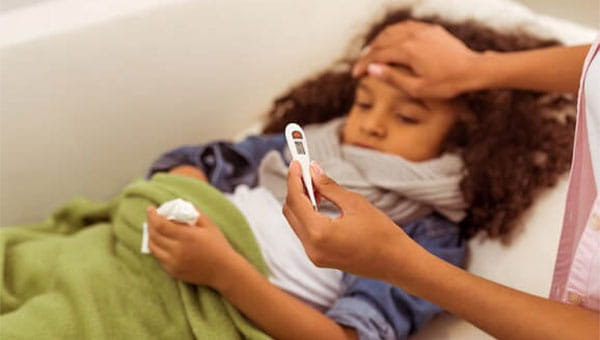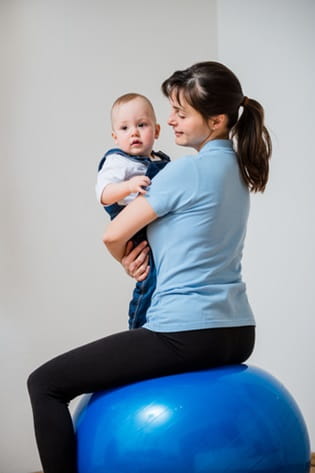Even the calmest of parents or caregivers can find themselves debating about what to do when their child has a fever. A fever is the body's natural response to fighting an illness. A fever also indicates that your child’s immune system is mobilizing its defenses to fight the underlying cause. While a fever is beneficial, in most cases, it can be an uncomfortable time for your child. Based on what their temperature is and if they have any underlying conditions, treatments may vary.
Taking Temperatures
The best way to taking your child's temperature accurately will depend on your child's age.
- Rectal temperatures - infants and children under the age of 3.
- Temporal artery temperatures - older babies and children
- Oral temperatures - children old enough to hold them in their mouth
- Tympanic membrane (ear) temperatures - age 6 months or older
- Axillary (underarm) temperatures - non-cooperative toddlers
98.6 (normal temperature)
A normal body temperature is 98.6, but everyone runs a little different and it can vary depending on the time of day. Your body's temperature is normally lower in the morning and higher in the afternoon.
100.5-101.5 (low-grade fever)
Research shows that the magic number is 100.5. This temperature range can be beneficial. Avoid heavy blankets, keep the child’s room cool, encourage them to rest and make sure they have plenty of liquids. If your child is younger than 2 months old, contact your pediatrician immediately or visit your local emergency room. For older children, this temperature can be reached with normal activities like exercise, wearing warm clothing, hot weather, warm food or drink, and even anxiety and ovulation. Allow 30 minutes for the body to adjust temperature after intense or outside activity before taking action.
101.5-103.5 (moderate fever)
A fever up to 103.5 can be a normal sign of an active immune system fighting infection. Giving acetaminophen for ages 2 months and up or ibuprofen for ages 6 months of age or older may reduce a fever by a degree or two. It’s important to make sure you give your child the right dose. You can also try a lukewarm bath to help bring your child’s temperature down. Call your pediatrician if your child continues to be uncomfortable or if you notice a change in appetite, sleep or activity level. If your child is two years or older, you may choose to visit BayCare Urgent Care or have a video visit using BayCareAnywhere.
Over 103.6 (high-grade fever)
A high fever may occur if your child has a virus or bacterial infection. The higher the fever, the greater the risk of a bacteria or virus that may require medical treatment. If your child has a fever of 104 that doesn’t downgrade to a moderate range with the use of acetaminophen, ibuprofen or a lukewarm bath within two hours, call your pediatrician right away for advice. If the fever lasts more than 48 hours, you should also consult your pediatrician. Your physician may advise you to go to the nearest emergency room.
Food and Water
You should always encourage your child to drink more liquids when they have a fever. If you begin to notice a decrease in appetite, give them liquids with electrolytes in them. If you are still concerned with the comfort level of your child, call your pediatrician. If you do not have a pediatrician, call 1-800-BayCare or find a pediatrician or a pediatric specialist near you.



